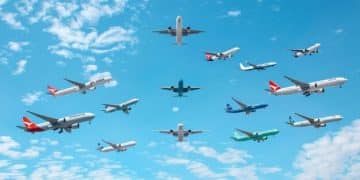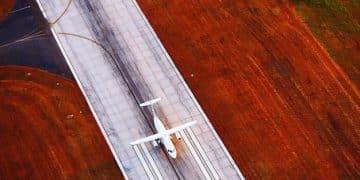Major Airlines Fleet Expansion: Which Aircraft Are They Buying?
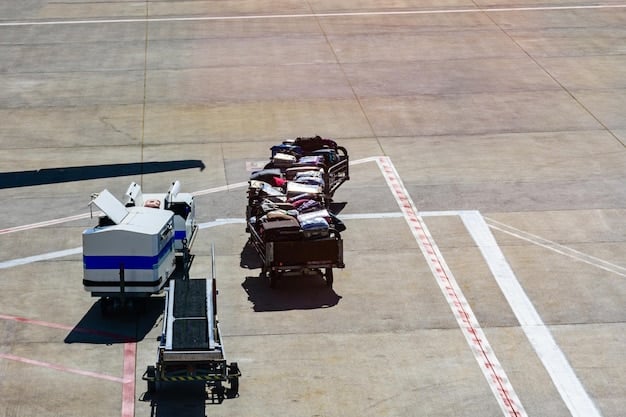
Major airlines are announcing significant fleet expansion plans, focusing on modern, fuel-efficient aircraft like the Airbus A320neo family and Boeing 737 MAX to meet growing demand and reduce operational costs.
The aviation industry is constantly evolving, and one key indicator of its direction is the fleet expansion plans of major airlines. Which aircraft are they choosing to invest in? Let’s dive in!
Airline Fleet Expansion: A Sign of Growth
Fleet expansion is a crucial indicator of an airline’s confidence in future growth and profitability. For passengers and industry observers alike, understanding these plans is vital for seeing where the aviation industry is headed.
Let’s explore the driving forces behind recent fleet expansions.
Reasons for Expanding Fleets
Airlines embark on fleet expansion for a variety of strategic reasons. Increased passenger demand, route network expansion, and the need to replace aging aircraft are primary drivers.
- Growing Passenger Numbers: As global travel becomes more accessible, airlines need more seats to accommodate increasing demand.
- New Routes and Destinations: Expansion often involves adding new, lucrative routes that require additional aircraft.
- Efficiency and Sustainability: Modern aircraft offer significant fuel savings and reduced emissions, aligning with environmental goals.
Fleet expansion offers airlines enhanced operational flexibility and the ability to capture emerging market opportunities.
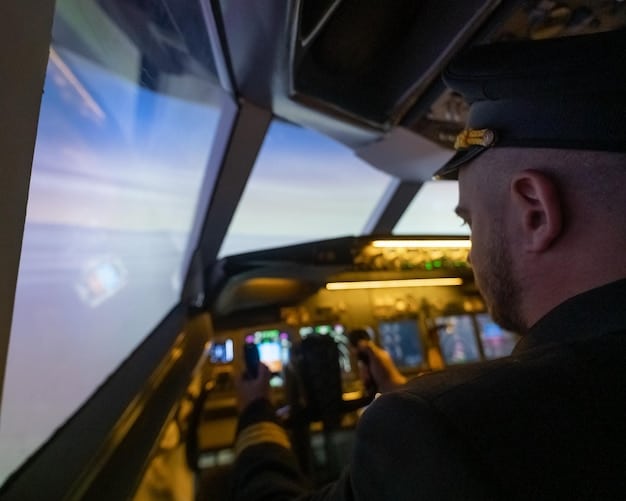
The Airbus A320neo Family: A Popular Choice
One of the workhorses of modern aviation is the Airbus A320neo family. It includes the A319neo, A320neo, and A321neo models. This family of aircraft is a popular choice for airlines seeking to upgrade or expand their narrow-body fleets.
Here’s why airlines are so keen on the A320neo family.
Efficiency and Range
The A320neo family stands out due to its fuel efficiency and extended range. The “neo” stands for “new engine option,” which incorporates advanced engine technology to reduce fuel consumption and emissions.
- Lower Fuel Costs: These aircraft consume up to 20% less fuel than previous-generation A320 models.
- Extended Range: They can fly longer distances, opening up new route possibilities.
- Reduced Noise Footprint: The new engines also reduce noise pollution around airports.
Airlines like Spirit and Frontier have heavily invested in the A320neo family to boost their operational efficiency and environmental credentials.
Boeing 737 MAX: Competing for the Skies
The Boeing 737 MAX is another key player in the narrow-body market. It aims to offer similar benefits to the A320neo family, including improved fuel efficiency and enhanced range.
Let’s see how the 737 MAX stacks up in the eyes of airlines.
Technological Advancements
The 737 MAX incorporates several technological advancements to enhance its performance. These include advanced engines, improved aerodynamics, and updated flight controls.
- Engine Improvements: The LEAP-1B engines offer significant fuel savings and reduced emissions.
- Aerodynamic Enhancements: Winglets and other design improvements reduce drag and improve fuel efficiency.
- Pilot Training: Updated flight control systems aim to improve safety and handling.
Southwest Airlines, a long-time Boeing customer, has been a major operator of the 737 MAX, benefiting from its enhanced capabilities and lower operating costs.
Wide-Body Investments: Airbus A350 and Boeing 787 Dreamliner
While narrow-body aircraft dominate short- to medium-haul routes, wide-body aircraft are essential for long-haul international flights. The Airbus A350 and Boeing 787 Dreamliner are leading choices for airlines looking to upgrade their wide-body fleets.
Let’s see which factors influence these wide-body investments.
Passenger Comfort and Operational Efficiency
The A350 and 787 are designed to offer superior passenger comfort and operational efficiency. They incorporate advanced materials, aerodynamic designs, and fuel-efficient engines.
- Cabin Innovations: These aircraft feature improved cabin air quality, reduced noise levels, and larger windows.
- Fuel Efficiency: Their engines offer significant fuel savings compared to older wide-body models.
- Extended Range: They can fly ultra-long-haul routes, connecting distant cities directly.
Airlines like Qatar Airways and Singapore Airlines have invested heavily in the A350 and 787 to enhance their long-haul operations, providing passengers with a more comfortable and efficient travel experience.
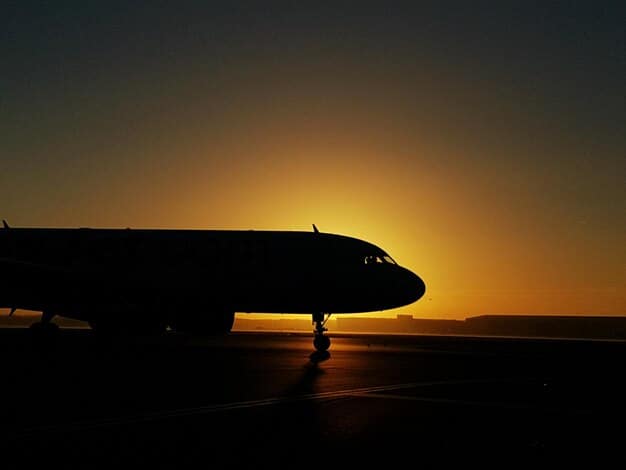
Regional Jet Orders: Embraer E-Jets E2
Regional jets play a crucial role in connecting smaller cities to larger hubs. The Embraer E-Jets E2 family, including the E190-E2 and E195-E2 models, offers airlines a modern and efficient option for regional routes.
The E-Jets E2 family holds several benefits for airlines.
Right-Sizing Capacity and Route Optimization
The E-Jets E2 family is designed to offer right-sized capacity and route optimization. They provide a balance between passenger comfort, operational efficiency, and range.
- Optimized Capacity: These aircraft are ideal for routes with lower passenger demand, avoiding the need to fly larger, less efficient aircraft.
- Enhanced Comfort: Passengers enjoy comfortable seating, ample legroom, and overhead bin space.
- Operating Costs: They offer lower operating costs compared to larger aircraft, making them suitable for regional routes.
Airlines like Breeze Airways have embraced the E-Jets E2 family to serve underserved markets, offering passengers convenient and affordable travel options.
Impact on the Aviation Industry
Fleet expansion plans have a ripple effect throughout the aviation industry. They influence manufacturer production rates, pilot training programs, and airport infrastructure development.
The aviation industry continuously adjusts to fleet expansion.
Training and Infrastructure
As airlines introduce new aircraft types, there is a growing demand for skilled pilots and maintenance technicians. Airports also need to adapt to accommodate larger and more efficient aircraft.
- Pilot Training: New training programs are needed to familiarize pilots with the advanced systems of modern aircraft.
- Maintenance: Technicians require specialized training to maintain and repair these aircraft.
- Airport Upgrades: Airports may need to expand runways, taxiways, and terminal facilities to accommodate larger aircraft.
These factors contribute to the overall growth and modernization of the aviation industry, benefiting passengers, airlines, and the broader economy.
| Key Point | Brief Description |
|---|---|
| ✈️ Narrow-Body Focus | Airlines invest in Airbus A320neo & Boeing 737 MAX for efficiency. |
| 🌍 Wide-Body Expansion | A350 & 787 Dreamliner enhance long-haul passenger experience. |
| 💺 Regional Jet Growth | Embraer E-Jets E2 optimize capacity for regional routes. |
| ⚙️ Industry Impact | Fleet expansion drives training, maintenance, and airport upgrades. |
Frequently Asked Questions
▼
Airlines expand fleets due to rising passenger demand, new route opportunities, and replacement of aging aircraft with more efficient models.
▼
The Airbus A320neo family and Boeing 737 MAX are popular for narrow-body fleets. The Airbus A350 and Boeing 787 are favorites for long-haul routes.
▼
New aircraft often have quieter cabins, better air quality, more legroom and larger windows, offering a much more comfortable flying experience.
▼
Regional jets connect smaller cities to larger hubs, making air travel accessible and convenient for passengers in underserved markets, with an emphasis on efficiency.
▼
Fleet expansion stimulates pilot training, aircraft maintenance, and airport infrastructure upgrades, and also contributes to overall industry modernization and growth.
Conclusion
Major airlines are strategically expanding their fleets with modern, fuel-efficient aircraft to accommodate growing demand, enhance passenger experience, and achieve sustainability goals. Investments in aircraft like the Airbus A320neo, Boeing 737 MAX, Airbus A350, and Embraer E-Jets E2 highlight the industry’s commitment to innovation and efficiency. The future of air travel looks promising, with new routes, enhanced comfort, and reduced environmental impact on the horizon.
